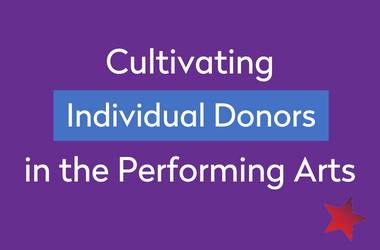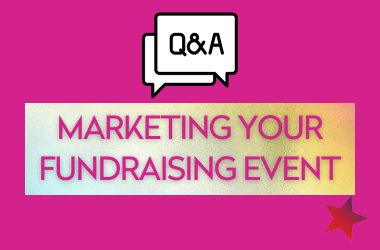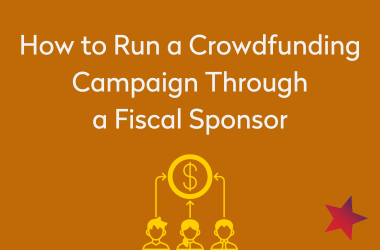Tips for Obtaining Institutional Funding
Development & Fundraising through Institutional Funding
Everyone needs money, and if you are an artist, nonprofit, or dance organization, a good chunk of your income is probably raised through fundraising. In the nonprofit sector, fundraising is often called “development”.
There are two basic types of development fundraising: individual giving and institutional giving.
Large organizations will often have different development teams that work on these two types of fundraising, but for small organizations and single artists, all the work probably falls on you, the artistic director, or a group of volunteers.
Learn more about individual giving here.
Institutional Funding for Artists
Institutional giving or funding refers to any money raised through institutional programs, such as grants, awards, fellowships, and scholarships. The process usually involves submitting a written proposal or application. Each institution will have its own funding priorities and guidelines for giving, often set by its board of trustees. Some will be open to new proposals, and others will accept applications only from preselected applicants. It is important to do thorough research before applying to any institution for funding. Good sources of information can be found in grant databases like the Foundation Center Directory, or on industry website listings such as Pentacle’s nextSteps or DanceUSA.
Below is a breakdown of several types of institutions that you may want to approach for funding:
Government Agencies – Development & Fundraising
There are federal, state and local agencies that give grants to arts and cultural organizations. Almost all are reserved only for nonprofit organizations or through a fiscal sponsor (see more about fiscal sponsorship below). Government grants are generally focused on public programs that serve the communities under their jurisdiction, so be sure to research their guidelines and follow all the instructions carefully. While the applications can be complicated, government grants are fairly dependable sources of funding and aim to be transparent and equitable in their giving.
Private Foundations – Development & Fundraising
Private foundations run the gamut from tiny family foundations with two trustees and no guidelines, to billion-dollar international philanthropies. Each one will have its own funding priorities and application process, so it is important to do your research and make contact with someone at the foundation who can let you know if your proposal matches their interests. Often the first form of contact with a private foundation is through a letter of inquiry (LOI). This is a short 1-2 page introduction to your work and why you are seeking their support. If the foundation responds favorably to your LOI, then you may get funding right away, or be asked to submit a full proposal. Keep in mind that you may never hear back from a foundation about your LOI, and proposals can take up to a year to be reviewed.
Corporate Giving – Development & Fundraising
Corporate giving can take many forms, from grants to sponsorships to in-kind donations. Some may have employee giving programs, which you access through individual donors, others may have a separate foundation that handles their corporate giving. Again, it comes down to research and who you know in the corporation.
Fiscal Sponsorship – Development & Fundraising
Most large donors and institutions will only give to nonprofit 501(c)(3) organizations for tax reasons and fiscal accountability. If you are not incorporated as a 501(c)(3), you can still access these donors using a fiscal sponsor. Fiscal sponsors are nonprofit 501(c)(3) organizations who receive monies on your behalf and accept financial and legal responsibility for the funds. Generally, fiscal sponsors will deduct a nominal administrative fee before regranting any monies raised to you. Most fiscal sponsors will ask you to sign a contract and agree to their terms for the grant application and management. Ideally the arrangement is beneficial for both sides, and you and your fiscal sponsor will have clear and open communication throughout the process.
Fundraising through institutional funding is hard work.
It requires a great deal of research, attention to detail, and persistence to pay off. Don’t try to do everything at once. If you have a short term fundraising goal, work on cultivating individual giving first. Institutional giving takes longer, but the funds can be larger. This is appropriate for your long-term plans and goals. Once you’ve decided what you want to do and the timeline, devote the necessary resources into pursuing these fundraising goals. Once your fundraising revenue gets flowing, there is no limit to what you can do!
Related Resources
Cultivating Individual Donors in the Performing Arts
Cultivating Individual Donors in the Performing ArtsDevelopment & Fundraising through Individual Donations Everyone needs money, and if you are an artist, nonprofit, or dance organization, a good chunk of your income is probably raised through fundraising. In the...
Q&A: Marketing Your Fundraising Event
Q&A: Marketing your Performing Arts Fundraising EventUnveiling the Power of Event Fundraising: Elevate Your Fundraising Efforts! Hosting an event stands out as one of the most collaborative ways to raise funds. From planning to execution, various steps and factors...
Running a Crowdfunding Campaign Through a Fiscal Sponsor
Running a Crowdfunding Campaign Through a Fiscal SponsorRunning a crowdfunding campaign through a fiscal sponsor can be a great way to raise funds for your project. Being able to provide tax deductibility to your campaign contributors can be the factor that pushes...



